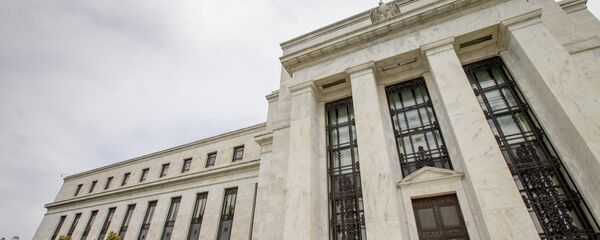Kristian Rouz — Global trading in currencies has declined steadily throughout the past 18 months amidst the dollar's rally, with entailing imbalances and volatility in FX rates effectively undermining investors' appetite for the increasingly risky and unpredictable transactions. Daily volumes of international currency trading dropped to well below $5 trln a day last month. The financial turmoil of late 2015 — early 2016 played its role as well, as rife volatility disrupted normal trading practices. Exiting or entering currency positions now immediately affects FX rates, a new phenomenon in trading, stemming from central banks' ultra-accommodative policies resulting in voluntary currency devaluations and rendering currency traders and investors nervous.
Select banks saw a decline in number of their clients involved in FX operations over the period of the past year and a half. The main reason is the dollar's dramatic appreciation stirring imbalances in global trade as the US currency has become too expensive for certain traders. Meanwhile, a wave of devaluations in the Eurozone, Japan and many emerging markets triggered massive changes in FX rates of their respective currencies against one another and against the dollar, resulting in declining predictability of currency trades. Subsequently, the global currency market has become a risky environment, negatively affecting trading volumes.
Among the most prominent examples of volatility in global FX rates are the South African rand's slump by 9% in January, the Kiwi dollar's crash in August, devaluations in oil-based currencies including the Norwegian krone, Russian ruble, Brazilian real and Canadian dollar. Meanwhile, the yen has appreciated against the dollar in recent months, jumping by an additional 2.6% on Thursday after the Bank of Japan's policy decision.
Such an environment is extremely discouraging for active participation as far as traders and investors are concerned.
"You tend to find volume dropping off if the market's very choppy. Banks don't have the capital to commit to warehouse (take on their balance sheet) risk anymore, so it's kind of pass the parcel. If there's a large trade that's gone through, they don't want to warehouse it and they'll pass it on, so you do get this gap risk," Mark Astley of Millennium Global Investments in London said.
According to CLS data, in February daily global trade totals dropped to $4.86 trln from $5.0 trln a year prior, whilst in January the total volume of international trade in currencies stood at $4.91 trln a day.
Even so, trade in currencies is still the world's largest financial market, as it is instrumental in ensuring global trade in goods and services, which has also been increasingly disruptive recently amidst the dollar rally.
"When everybody hits pause and there's no more liquidity on either side, very, very small orders can take those markets down significantly. It's these type of movements that will ultimately happen more frequently as we go more into more electronic, more algo trading," Andy Maack of Malvern, Pennsylvania-based Vanguard Group Inc. said.
That said, the declines in available capital on all sides of international trade translates into declines in trade volumes, as, albeit the volumes of available monetary liquidity are adding, the value of currencies is still falling at a faster pace. Subsequently, as central banks across the globe continue their poorly-coordinated efforts to spur local economies, global trade is poised for greater disruptions and an overall decline in both volumes and profitability.



